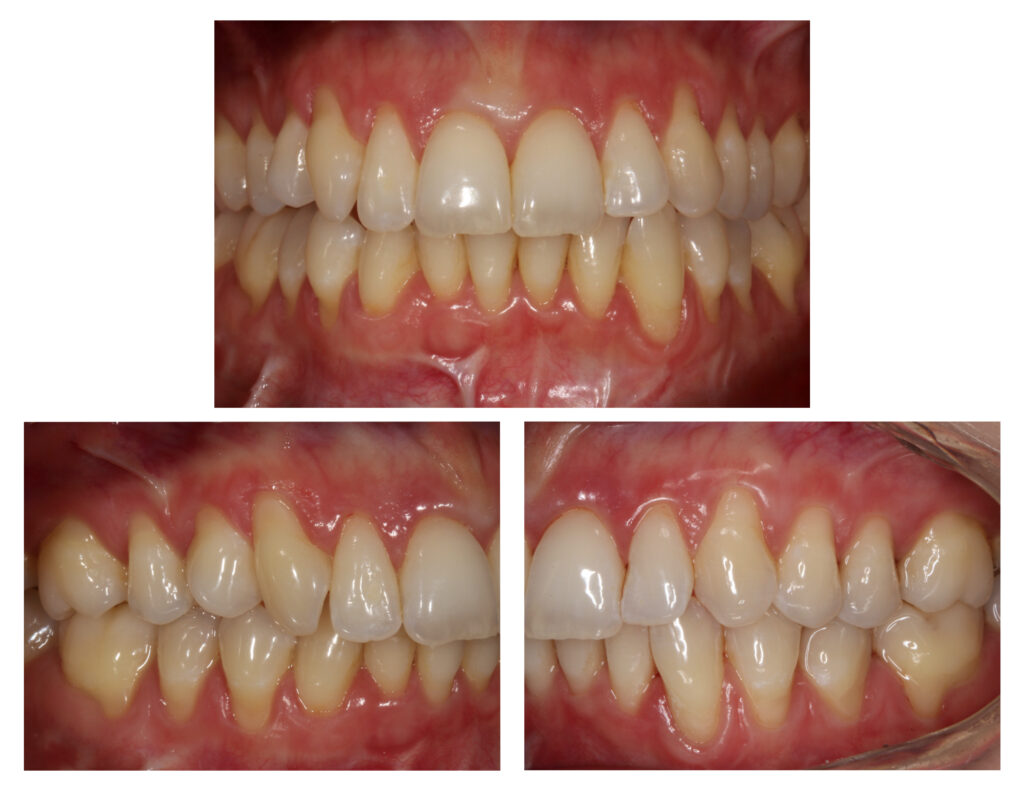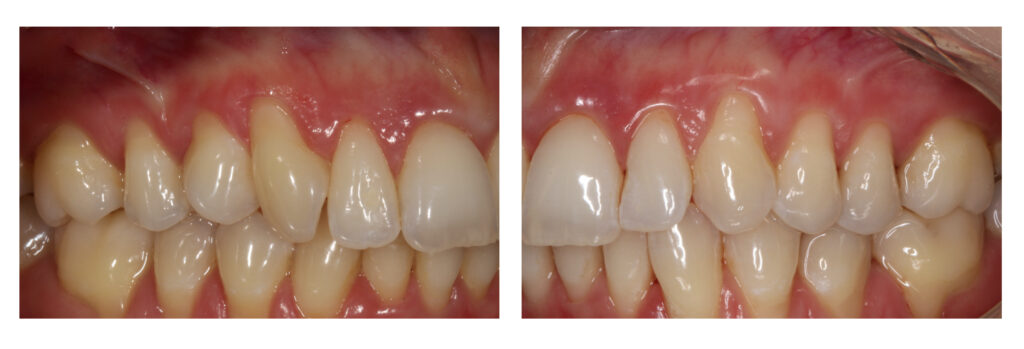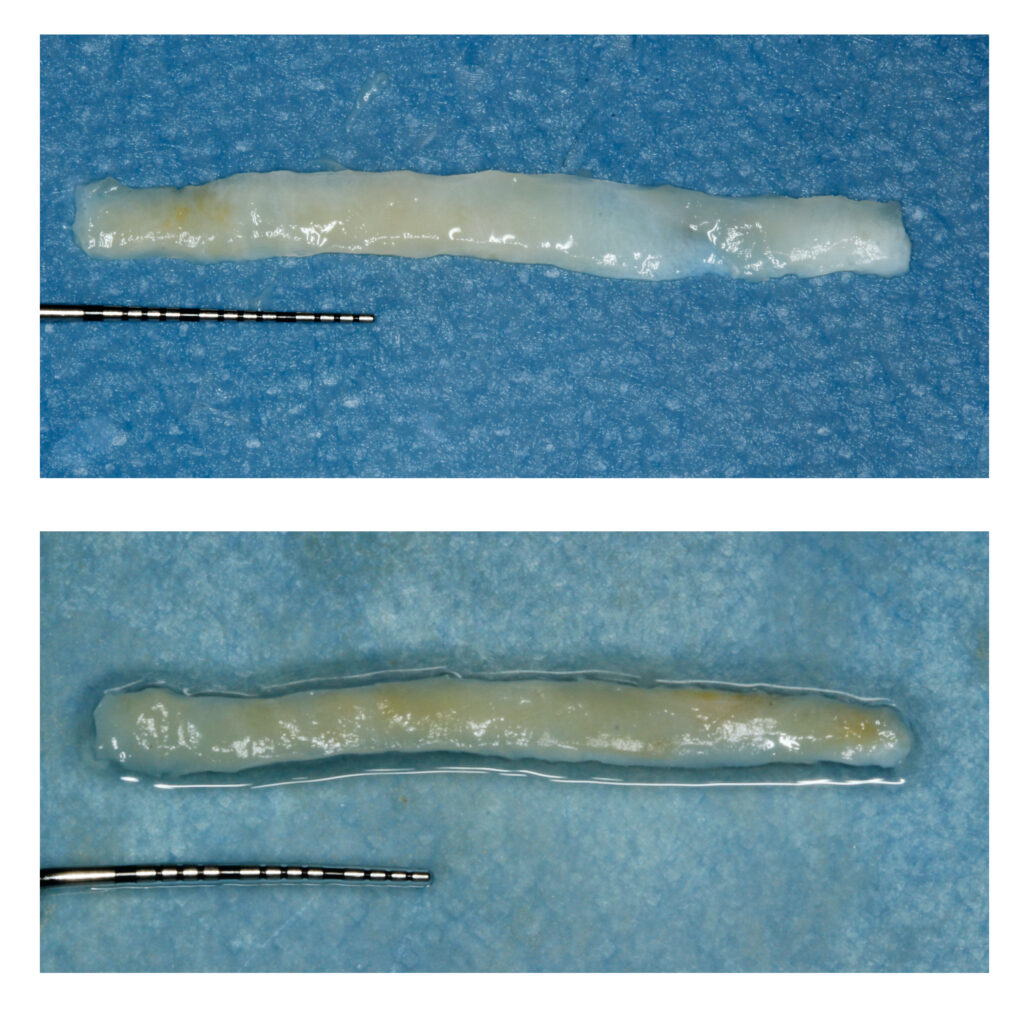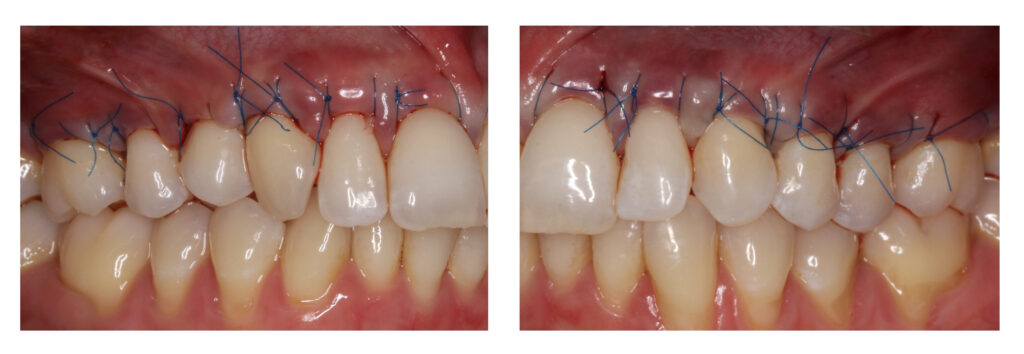Przypadek kliniczny nr 2 – Pokrycie mnogich recesji dziąseł w szczęce zmodyfikowaną techniką tunelową z przeszczepami podnabłonkowej tkanki łącznej
Planując podejście chirurgiczne w przypadku leczenia mnogich recesji dziąseł należy ocenić typ i rozmiar recesji, rodzaj fenotypu, obecność strefy skeratynizowanej, stan brodawek dziąsłowych oraz pozycje zębów. W przypadku recesji o podobnych wymiarach, zwłaszcza w przypadku niskich i wąskich brodawek dziąsłowych, preferowaną metodą jest zmodyfikowana technika tunelowa. W tej technice płat preparowany jest jako split-full-split (płat dzielony w obszarze brodawek dziąsłowych, pełnej grubości aż do linii śluzówkowo-dziąsłowej, a następnie płat dzielony). W miejscach, gdzie występuje cienki fenotyp, strefa skeratynizowana jest wąska (bądź też brak strefy skeratynizowanej), a pozycja zęba odbiega od prawidłowej, należy zastosować przeszczep podnabłonkowej tkanki łącznej (SCTG). W opisywanym przypadku SCTG spozycjonowano w obszarze zębów trzonowych, przedtrzonowych i kłów. Płat przesunięty dokoronowo powinien całkowicie pokrywać przeszczepy autogenne. Szwy usuwane są po 14 dniach. Zmodyfikowana technika tunelowa pozwala uzyskać optymalne efekty estetyczne, a znacząca poprawa widoczna jest już po kilku tygodniach od zabiegu (ostatnie zdjęcia wykonano po 6 miesiącach).







